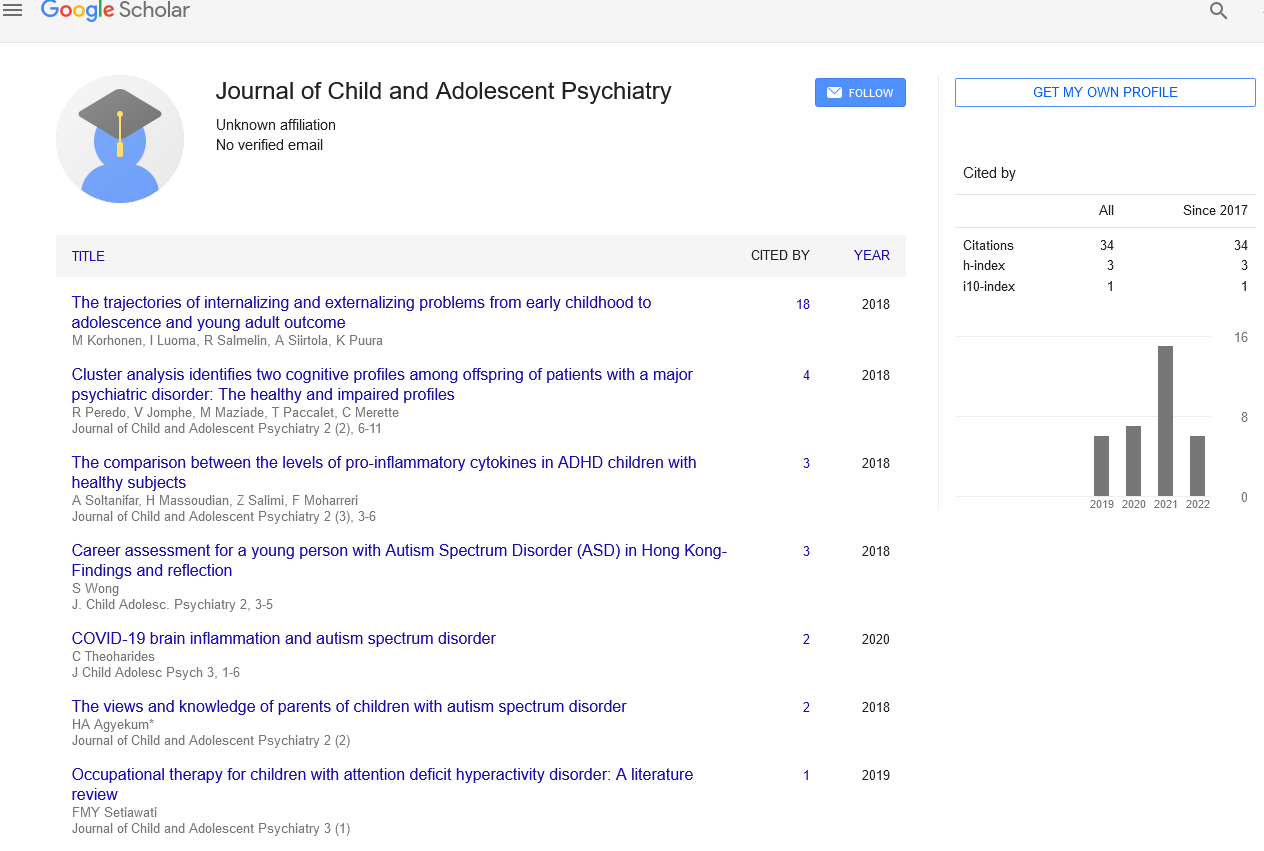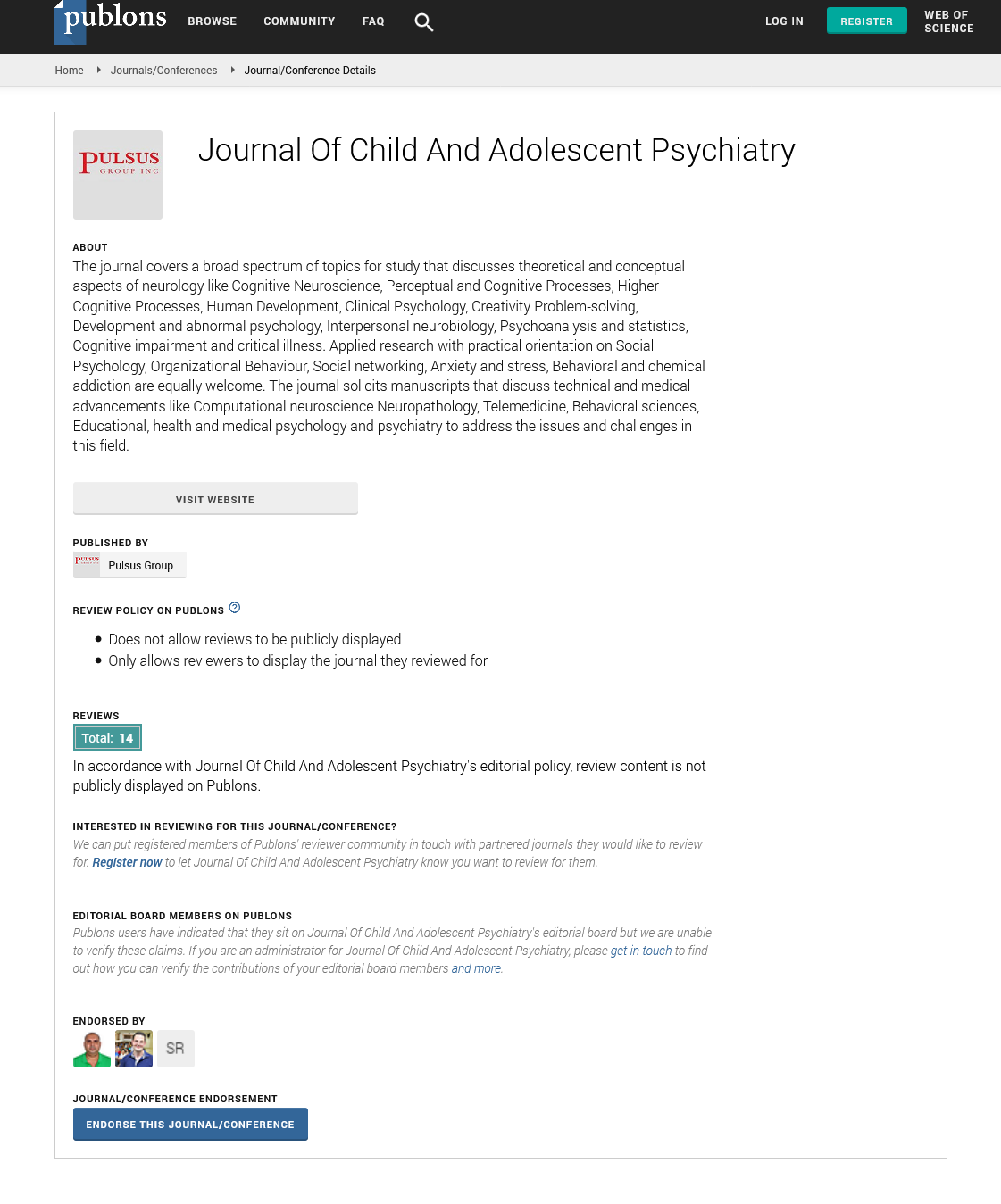adolescence to young adulthood
Received: 02-Dec-2021 Accepted Date: Dec 22, 2021; Published: 22-Dec-2021
Citation: Paul R (2021) Adolescence to Young Adulthood. Child Adolesc Psych. 5(5):1
This open-access article is distributed under the terms of the Creative Commons Attribution Non-Commercial License (CC BY-NC) (http://creativecommons.org/licenses/by-nc/4.0/), which permits reuse, distribution and reproduction of the article, provided that the original work is properly cited and the reuse is restricted to noncommercial purposes. For commercial reuse, contact reprints@pulsus.com
Introduction
Childhood ends with adolescence. Youthfulness alludes to the mental improvements which are connected comprehensively to the physical growth processes defined by the term 'puberty'. It is a degree of existence that isn't homogeneous; the tasks, preoccupations and cognitive adulthood of young people range to a volume that calls for us to keep in mind them clinically in phrases of (i early, (ii middle and (iii late adolescence. The contrasts somewhere in the range of long term olds, contingent upon individual turn of events, are those between individuals who, in body and mind, are still children, and people who are in many regards youthful grown-ups.
The normal yet mixed up suspicion that psychopathology is commonplace (even uncontrolled in adolescence may lead to under-diagnosis of any real difficulties. If all young adults are as 'emotionally disturbed' as changed into advised through practitioners with inside the past, then the teen that manifests some 'disturbance' must, through definition, be typical, and therefore 'normal'.
During the 1930 s Hutter, a therapist, depicted puberty as a time of improvement 'in which normally abnormalities so often happen it is abnormal that everything passes normally'. Anna Freud writing on formative years with inside the Fifties stated it was 'abnormal' if an infant saved a 'constant equilibrium throughout the adolescent period. The adolescent manifestations come near to manifestation arrangement of the hypochondriac, insane or dis-social request and consolidation nearly imperceptibly into... almost all the mental illnesses'. The evidence from broadly based studies of adolescents in the com-munity (as opposed to clinic-attending samples) indicates that these generalizations were undoubtedly exaggerated. All things considered, upwards of one of every five young people do encounter critical mental problems. Among these problems are
• Tensions (especially fears about school and social circumstances),
• conduct problems
• Eating disorders (anorexia nervosa, bulimia nervosa),
• Substance abuse
• Discouragement (and self-destruction endeavours, for the most part a fairly later wonder).
The distinction between a kid's and a young adult's difficult conduct is the degree of risk involved. The ramifications of hastiness, blunders of judgment and irresponsible experimentation tend to be more serious in the young adult.
Identity Disorder
The DSM-IV has a class for issues regarding identity. The fundamental component of what is called 'personality problem' is a powerlessness to incorporate different aspects of the self into a coherent and acceptable sense of self, causing considerable subjective distress, e.g. depression, anxiety or self-doubt. The demonstrative measures allude to vulnerability around at least one issues identified with character, including at least three of the following:
• Long-term goals
• Career choice
• Friendship patterns
• Sexual orientation and behavior
• Religious identification
• Moral value systems
• Group loyalties
Wretchedness calculates a decent arrangement in this hypothesis of character emergency and, as a generally common feature of adolescence, is a possibility that requires vigilance on the part of psychologists carrying out assessments.
Sadness Depressive responses are regularly referenced in the writing on school refusal, failure to thrive, substance abuse and delinquency, but depression has only a fairly recent history as a recognized trouble of youth in its personal right: a syndrome as opposed to a predictable reaction to loss, deprivation or maltreatment. Now, the quickest fee of growth in despair is amongst younger people. Depressive disorders, which encompass primary depressive disorder (unipolar depression), dysthymic disorder (chronic, slight depression) and bipolar disorder (manic depression), have farattaining results at the longer-time period adjustment of younger people. Among both children and adolescents, depressive disorders represent an increased risk for illness and inter-personal difficulties that persist long after the depressive episode has ended. There is likewise an expanded danger for substance misuse and self-destructive conduct. Medical care experts might be hesitant to analyze a youngster 'rashly' as mentally ill, despite the undoubted advantages of early diagnosis and treatment if reliable. There are no 'well established' psychosocial treatments for child-hood depression as yet, although behavioral self-control therapy and cognitive-behavioral coping skills meet the 'probably efficacious' criteria.






